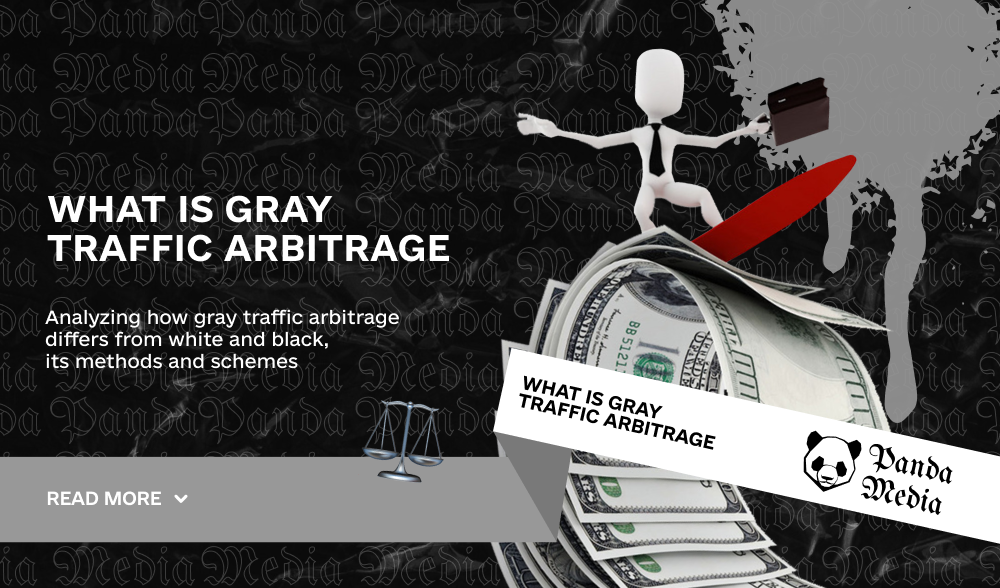Don't miss interesting news

Traffic arbitrage is when you bring customers to an advertiser for a reward: for example, a percentage of sales or a fixed amount for a certain targeted action. Arbitrage can be white, gray, or black. Today we will talk about gray traffic arbitrage: let’s understand what it is, how it differs from white and black arbitrage, who uses it, and how.
First, let’s understand what white and black arbitrage are.
White arbitrage is when a webmaster uses standard methods of attracting customers that are not prohibited by affiliate programs: for example, contextual or banner advertising. White arbitrage offers do not mislead users in any way.
Black arbitrage is when a webmaster uses prohibited methods of attracting users. For example, clickander: when a person goes to the advertiser’s website automatically, without clicking on the ad. Or when an arbitrager drives traffic to an offer that deceives the user. For example, when a user is offered to install a supposedly safe file with a game or useful software, but in fact, they infect the computer with viruses. Or when they write off money for goods and send sand or broken bricks instead.
Gray arbitrage is a cross between black and white. In this case, a webmaster can cheat a little to get around the restrictions of a CPA network or a particular advertiser. Or drive traffic to an offer that partially hides the truth from the user. By the way, the offers themselves are often not moderated on social media, and to launch an advertising campaign, you need to use cloning or substitute creatives.
For example, gray arbitrage includes
offers from online casinos, as they all work for their net profit and rarely allow users to win;
offers with SMS subscriptions, as information about their cost is often hidden, and the user does not know how much money will be withdrawn from him or her;
traffic-driving doorways, as they clog search results and are officially banned by search engines.
To define gray arbitrage, we can derive the following formula: it is something that is officially prohibited by CPA networks, but it is rarely punished. Or they will not punish you much – they just give you a warning.
The boundary between black and gray arbitration is rather arbitrary. All offers that are not white can be called both black and gray.
Traffic arbitrage earning schemes are diverse and wide, and it all depends on the chosen offer and traffic source. To make a profit, an arbitrageur must spend less on lead acquisition than he or she will receive from the advertiser. Different traffic sources are used in gray arbitrage:
– automatically with the help of a redirect;
– using a clicker – the advertiser’s website opens when the user clicks anywhere in the dorway;
– through a link.
In the latter case, the dorway practically functions as a regular website, but all links on it lead to the advertiser’s website.
– on visited resources, in comments under articles;
– on social networks in discussions of visited groups;
– on the walls of users in social networks;
– on forums;
– in personal messages wherever there is a possibility of correspondence between users;
– to e-mails via free and paid e-mail databases, etc.
There are many more sources of traffic in gray arbitrage, including Telegram channels, hashtags on social networks, and YouTube dorways. Earnings schemes are very diverse. For example, you can create dorms on video hosting sites for offers with children’s toys, or spam forums with a link to a course on making money online.